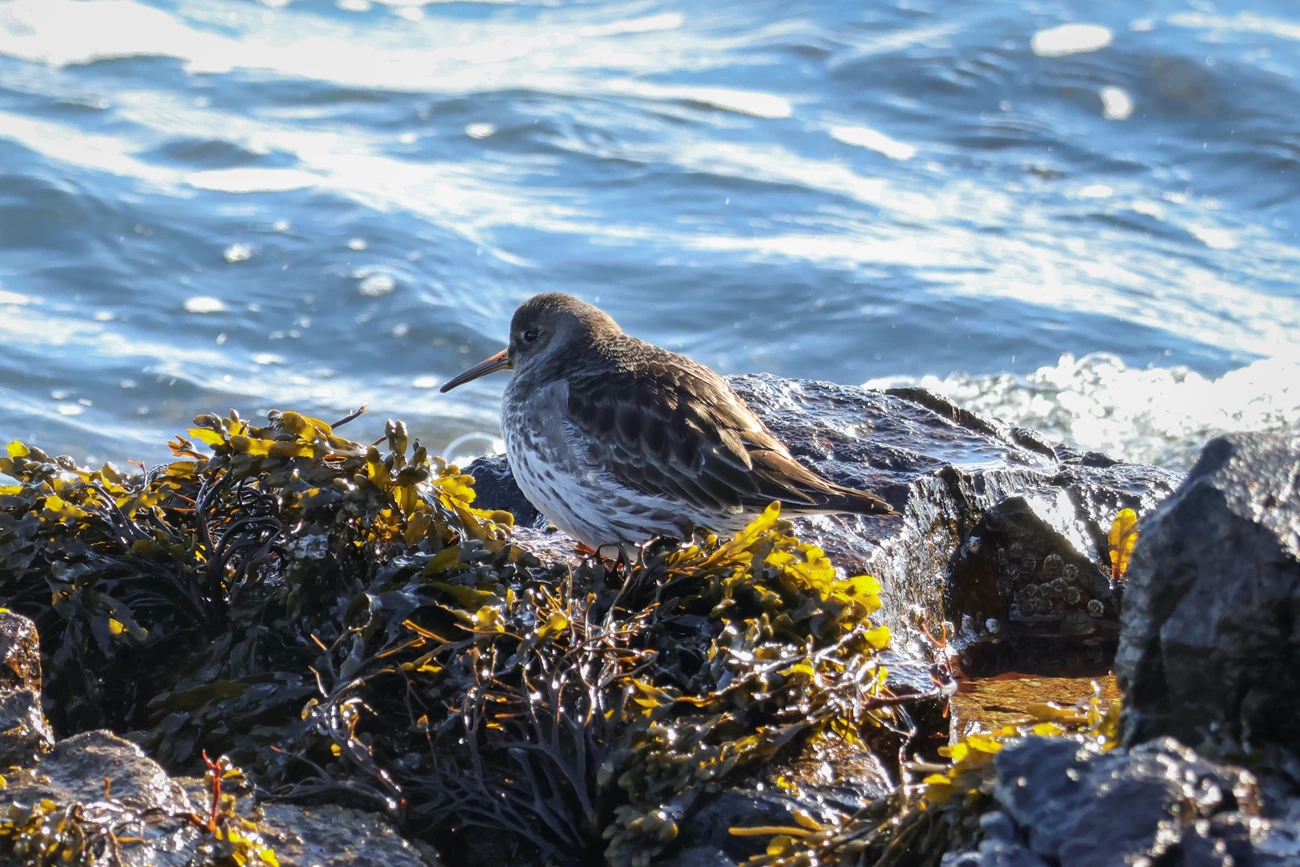Last updated: May 28, 2024
Article
Research Brief: Surveying Purple Sandpipers through the Decades

Photo by C. Schmitt, Schoodic Institute

Photo by C. Schmitt, Schoodic Institute
As hardy as Purple Sandpipers are, they are not immune to the changes that threaten our planet. Globally, shorebirds are one of the most threatened avian taxa as a result of human activity. Habitat destruction, overharvesting of their prey, and changes to prey lifecycles as a result of climate change all prove challenges to many shorebirds.
Population declines in Purple Sandpipers have been documented in Scotland and Belgium, where altered weather patterns caused some species to overwinter farther west than normal, following abundant prey. As a result, certain shores were emptier than expected, while others remained well inhabited by these species.
Are North American Sandpiper populations truly declining like the numbers in Belgium and Scotland seem to imply, or are they simply shifting their preferred locations?
North American Purple Sandpipers remained understudied prior to the early 2000s. In part, this is because they prefer to overwinter on Maine’s remote offshore islands, where they elude Christmas Bird Counts and are inaccessible to many birders.

Photo by C. Schmitt, Schoodic Institute
A follow-up survey traced the coast of Maine once more, conducted 2014-2017. The second survey found a steep decline in population, suggesting a 49% decline in the preceding decade. If the Purple Sandpiper population continues to shrink at this rate, this venerable bird will soon be faced with the threat of local extinction.
These prior studies now provide a baseline for a new statewide survey, coordinated by Elliot Johnston, a post-doctoral scientist with the Maine Natural History Observatory and supported by the Maine Outdoor Heritage Fund. In the winter of 2023-2024, Johnston, Mittelhuaser, and biologists from the Maine Department of Inland Fisheries and Wildlife retraced historical survey routes, including in Acadia, to provide resource managers with updated numbers to inform much-needed action in protecting the Purple Sandpipers.
Then and now, this survey is no small task. The coast of Maine includes approximately 4,500 islands and more than 3,500 miles of irregular shoreline with a wide variety of habitats. Although offshore areas tended to remain ice-free most of the winter, the weather nonetheless is variable and can become brutally cold and windy. Traversing the coast requires a variety of boat sizes based on conditions. Researchers follow the mainland shore and circle islands as close as safely possible as they tally the small birds among the rocks. Even with multiple observers present, some calculated estimation is required to get an adequate count.
This survey, along with those that preceded it and will likely follow it, is vital to understanding and managing the effects of climate change on coastal ecosystems. Acadia and the coast of Maine more broadly provides essential haven for Purple Sandpipers in the western Atlantic, with surveys suggesting that the state may host over a third of the Western Atlantic overwintering population. In addition to the Purple Sandpiper itself being a unique and joyful wildlife viewing opportunity, the Purple Sandpiper's northern range reflects the health of its prey and the larger Gulf of Maine ecosystem, which can be harder to monitor. Even if the birds are able to withstand a wide variety of conditions, their prey may not be able to. Blue mussels and other mollusks are sensitive to changes in sea temperatures and ocean acidification, and a lack of sandpipers may indicate certain species are not as abundant as they once were. Data taken from this survey and those like it will be used to understand the Purple Sandpiper’s needs and inform decisions regarding the ecosystem which surrounds it.
